
Practical cycling tips and training resources
Top 10 cycling training tips

Commit to a plan

Have a routine

Safety first
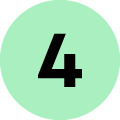
Be technique focussed
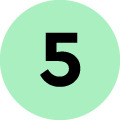
Don't just cycle

Adapt to succeed
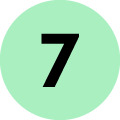
Set targets
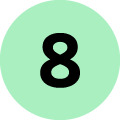
Find your strength
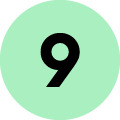
Fuel and recover
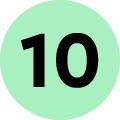
Keep it social
The training triangle
Training and developing your fitness can seem complicated because there is lots of different information available. The key is the training triangle.
Most of us think the cycling training sessions are the only thing we need to do to become stronger, fitter or faster. In reality you won’t make gains until the other two sides of the triangle, rest and nutrition, are considered.
As you increase your training, keep the triangle in balance by improving your nutrition and ensuring you listen to your body and respect it's need to rest in order to improve.
Training
Your cycling, conditioning and cross training is designed to progressively overload your muscles. When they recover from that overload they will get stronger. Our training plans include a mix of different effort levels to progressively build endurance.
Rest
Your body improves and progresses during rest phases, rest days and as you sleep.
Nutrition
Fuel your training and recovery correctly to ensure you have the right nutrients to have the energy to train hard and allow your body to heal and keep your bloods, bones and immune system healthy.
Important tips for cycling safely
Before you do anything else please read our important tips below to keep you and others safe.
- Consider joining British Cycling (or British Triathlon if you're doing a triathlon) and getting insured.
- Make yourself seen with high visibility clothing.
- Always wear a helmet and gloves.
- Practice if you're using cleated shoes, before you head onto the open roads.
- Consider a local cycle proficiency group or training.
- Read the Highway Code and understand your position related to pedestrians, other cyclists and motorists.
- Never cycle through red lights or on pavements where there use is only for pedestrians.
- Avoid undertaking and always be aware that lorries, buses and many cars have a huge blind spot when turning, particularly when turning left.
Adjusting your bike
Adjusting your bike is really important to make sure it's comfortable and safe when you're riding. Here are our top tips for getting in the saddle.
Saddle height
A simple method to determine a good saddle height is to work out your inside leg measurement then put the saddle around 10% higher. You should be measuring from the pedal axle to the top of the saddle.
Saddle position
How far forward or back your saddle is will change the pressure/angle of your knee joint. If you have small feet then push your saddle forward as this will ease the strain on your knees.
Handlebars
Do you like to ride crouched over with your head down? Or perhaps upright on the saddle, nice and tall? Your choice of position affects your choice of handlebar and even your choice of bike.
If you like to ride leaning forward, then the handlebars should be narrower than or the same width as your shoulders.
If you plan to ride sitting upright or leaning very slightly forward then it's a matter of deciding where you can comfortably place your hands. There are a range of adjustable stems available to allow for these changes.
Pedals
Ideally you should pedal with the balls of your feet. If you are not using clip in cleats, consider toe clips to help secure your foot in the correct position.
Spread your weight
There are five pressure points; two hands, two feet and a bum on the saddle. Here's how you can spread or alter your weight appropriately between these points:
- Lowering the bars shifts some weight to the hands.
- Pedalling a bit harder shifts some weight to the feet.
- Wear gloves or mitts.
- Wear padded cycling shorts.
Bike maintenance
Knowing how to change an inner-tube or adjust your breaks and gears should be essential knowledge for all cyclists:
- Pick up spare inner tubes, tyre levers, a bike pump and some basic tools.
- Carry a puncture repair kit.
- Consider a basic cycle maintenance course or view some tutorials online.
Bike riding tips
You've got all the gear but we've got all the ideas. Read our top tips to help get you started in your cycling, improve your experience when you’re riding, and keep you safe when training or taking part in an event.
Getting started
- Apply both brakes.
- Position one pedal in the 2 o’clock 'power position'.
- Put all your weight on this pedal; then release the brakes.
- Stand up on the pedal and simultaneously ease yourself back onto the saddle.
- Keep your grip on the handlebars firm but relaxed so you will not wobble.
- As you gain speed, shift to higher gears.
In motion
- Use small adjustments to the handlebars and lean your bike to correct your line.
- Look up and ahead rather than staring at your front tyre.
- Do not weave in and out of parked cars as you ride along.
- Hold your line and ride with authority.
- Do not undertake.
Stopping
- Free one foot if you use toe clips, straps or cleats.
- To slow, apply both brakes evenly. Your front brake actually accounts for 70% of your braking power.
- As you slow, shift down a few gears to make it easier to start up again.
- Just as you come to a complete stop, turn the handlebars slightly away from the side you step down. The bike will lean slightly to this side, making it easier to step down.
- Step down off the seat and put one foot down. You will find that one side is more natural than the other.
- As you are stopped, reposition your pedal into the power position so that you are ready to start again.
Descending
- Be sensible about the speed at which you can remain safe and in control.
- Avoid sharp braking – stay smooth, relaxed and anticipate what is ahead. Keep your centre of mass low on the bike and don’t lean your body into the corners – the bike leans a little, not you.
- Be aware cars will come at you around corners. Never sacrifice safety for speed – take blind corners slowly. Slow down before you reach a corner.
Scan and signal
- Relax or remove the hand on the side you are scanning to avoid turning the handlebars as you scan.
- Slightly tighten your grip on the other hand for balance and control.
- Briefly turn your head to look over your shoulder so you can scan behind you. You may need to do this a few times.
- Let others know what you plan to do before you do it. Hand signals are a vital communication tool. Always signal your intent when turning, changing lanes and changing position within the lane.
- Make your signals definite, bold and clear.
Group riding
Riding in a group or close to other cyclists brings unique dangers but also advantages. We would strongly suggest looking at joining a local cycling club or group to experience good group riding etiquette and safety. Here are some of the basics:
- Stay consistent and smooth – try to avoid making dramatic movements or sudden changes in direction. Communicate clearly both verbally and visually with hand signals.
- Look forward and maintain your focus on what is coming up, without getting too distracted by other riders around you. If you notice a danger such as a pothole or a car, communicate this to others in the group.
- Share the lead – don’t just sit in draft for miles on end – take your turn at the front of the group.
More useful information
Now you've got the basics sorted check out how to stretch, strengthen and fuel for your cycle with more top advice from our training partner Running with Us. And if you haven't already then find the perfect plan for you.
British Cycling is another great resource to help you prepare for riding in all conditions.


